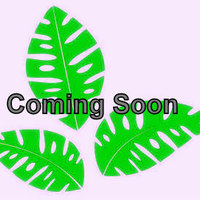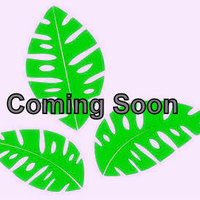Description
White peroba is a timber tree originating from the Atlantic Rainforest region of Brazil, its native range extending along the coastal strip from the state of Bahia, through Espirito-Santo, to Rio de Janeiro.
It may grow into a large tree reaching heights of up to 40 m (130 ft), though is more typically 20 to 30 m (65 to 100 ft) tall with a straight, round, mostly branch-free trunk up to 90 cm (3 ft) in diameter. This supports a moderately leafy crown of branches held close to the trunk. The bark is yellow-brown, smooth on young trees, becoming ridged and rough with age.
The leaves are compound, being made up of up to seven lance-shaped leaflets palmately arranged. They group at the ends of the branches and in the dry season fall off the tree to conserve water, leaving the branches bare until the rainy season when the new leaflets start to grow. Emerging crimson-red, the leaflets become dark green with age.
Flowers white, trumpet-shaped and borne in pyramidal clusters arising at the ends of the branches. They come into bloom in spring, coinciding with the transition from the dry to the rainy season and are soon followed by cigar-shaped seedpods up 30 cm (1 ft) long. Green when young, the long seedpods become dark brown and dry when mature, then split lengthwise to release their seed, which are winged for dispersal by wind.
Use
White Peroba produces a moderately heavy wood, averaging around 750 kgs per cubic meter (47 lbs per cubic ft), with high natural resistance to rot, decay and marine environments. This puts it in the durable hardwood class, suitable for both indoor and outdoor use. It compares favourably to Teak (Tectona grandis) wood, being heavier and proportionately stronger.
The heartwood can vary in colour but is generally light brown with shades of olive and red, and can be stained and polished to a very high lustre.
It is one of Brazil's major timber exports and was initially imported into the United States for ship-building purposes but is now more widely accessible around the world and is typically used for fine furniture and cabinets, interior and exterior joinery, interior and exterior flooring, including parquetry and decking, as well as boat-building. It is also sliced for decorative veneer.
White Peroba is planted occasionally in parks and gardens in its native range for its shapely form and eye-catching foliage and flowers.
Climate
Grows naturally in humid subtropical and tropical climates, generally areas with annual lows of 19 to 25°C, annual highs of 27 to 35°C, annual rainfall of 900 to 3000 mm, and a dry season of 4 months or less.
Growing
New plants are usually started from seed extracted from mature seedpods. Because they lose their viability quickly, they should be sown within days. Sown in a free-draining potting mix, around half should germinate and these within thirty days. Seedlings can transplanted to the field when 30 to 50 cm tall or six to eight months and preferably at the start of the rainy season in seasonally dry areas.
Performs best on fertile, free-draining clay-loam, loam, sandy-loam and loamy-sand soils of a moderately acid to neutral nature, generally with a pH of 5.0 to 7.0, and on sites with full sun exposure.
Problem features
For those working with the sawn timber, the dust can be an irritant to the respiratory tract.
Where it grows
References
Books
-
Berni, C. A & Bolza, E. & Christensen, F. J. 1979, South American timbers - the characteristics, properties and uses of 190 species, Commonwealth Scientific and Industrial Research Organization (CSIRO), Division of Building Research, Highett, Victoria, Australia
-
Brooks, Pamela 2001, The complete guide to allergies, Robinson, London
-
Chudnoff, M. 1984, Tropical timbers of the world, Forest Service, U.S. Department of Agriculture (USDA), Washington, D.C.
-
Forest Products Laboratory (U.S.) 2007, The encyclopedia of wood, Skyhorse Pub, New York
-
Lorenzi, H. 2002, Brazilian trees : a guide to the identification and cultivation of Brazilian native trees. Vol. 1, 4. ed, Instituto Plantarum de Estudos da Flora, Nova Odessa, Sao Paulo
-
Porter, T. 2012, Wood : identification & use, Compact edition, Guild of Master Craftsman Publications, Lewes, East Sussex
-
Record, S. J. & Hess, R. W., 1972, Timbers of the New World, Yale University Press, New Haven, Connecticut & Arno Press, New York
-
Reyes, G. 1992, Wood densities of tropical tree species, U.S. Department of Agriculture, Forest Service, Southern Forest Experiment Station, New Orleans, Louisiana
-
Scheffer, T. C & Morrell, J. J. 1998, Natural durability of wood : a worldwide checklist of species, Forest Research Laboratory, Oregon State University, Corvallis, Oregon
-
Tatken, R. L., & C. A. Browning 1987, Health effects of exposure to wood dust: A summary of the literature. No. PB-87-218251/XAB, National Institute for Occupational Safety and Health, Cincinnati, Ohio



